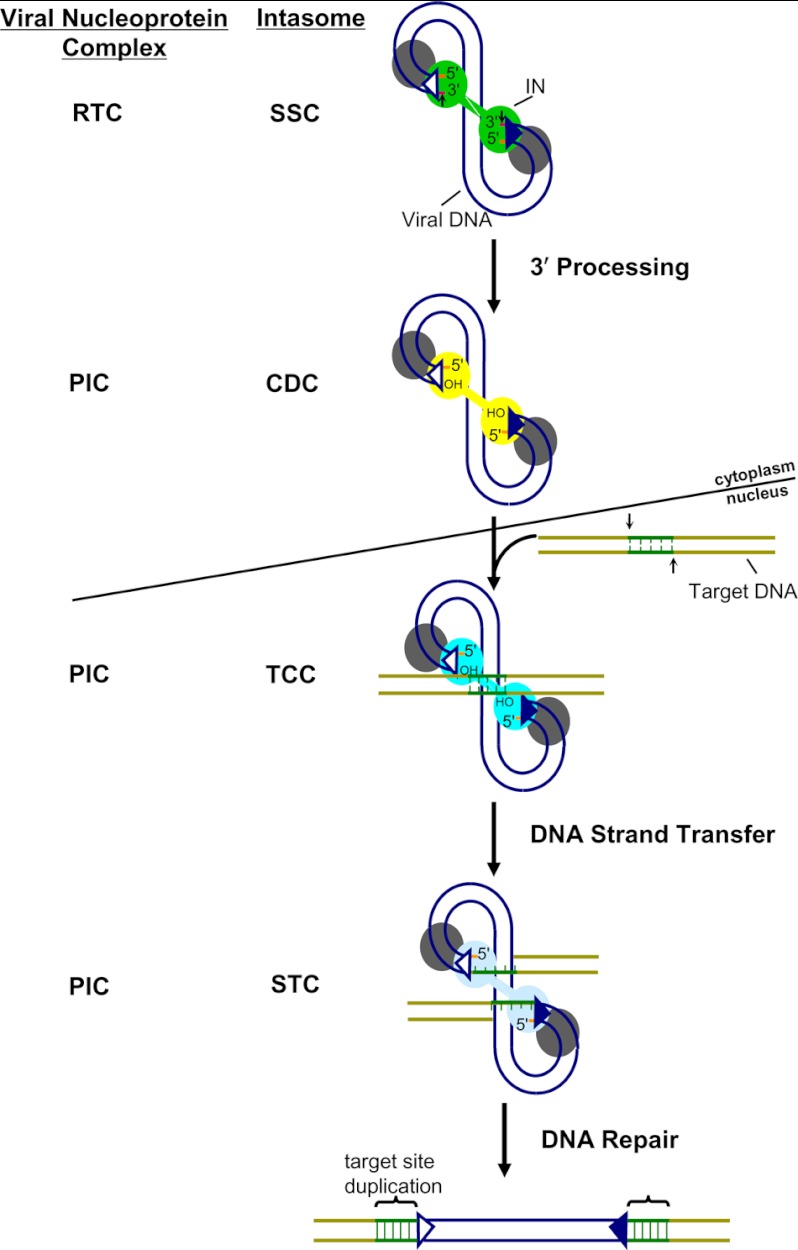FIGURE 1.
Retroviral nucleoprotein complexes and IN-mediated DNA cutting and joining reactions. The SSC substructure of the viral RTC forms when IN engages the LTR ends (U3 end of the upstream LTR (open triangle) and U5 end of the downstream LTR (closed triangle)) of the newly synthesized viral DNA. 3′-Processing (scissile phosphodiester bonds marked by short vertical arrows), which can occur in the cell cytoplasm (3), converts the RTC to the PIC, yielding the CDC with activated CAOH 3′ termini. The TCC is formed in the nucleus when the PIC engages chromosomal target DNA (dark green region delineates the 5-bp stagger cut made by HIV-1 IN). Integration of the viral LTR 3′-ends yields the STC, with viral DNA 5′-ends unjoined. Repair of the DNA recombination intermediate, which is mediated by host cell enzymes and likely requires active proteolysis of PIC components, yields the integrated provirus flanked by the duplication of the target DNA cut. Two of the four IN monomers within each complex are color-coded to match the inner monomers of the respective PFV intasome crystal structures as shown in Fig. 2.

